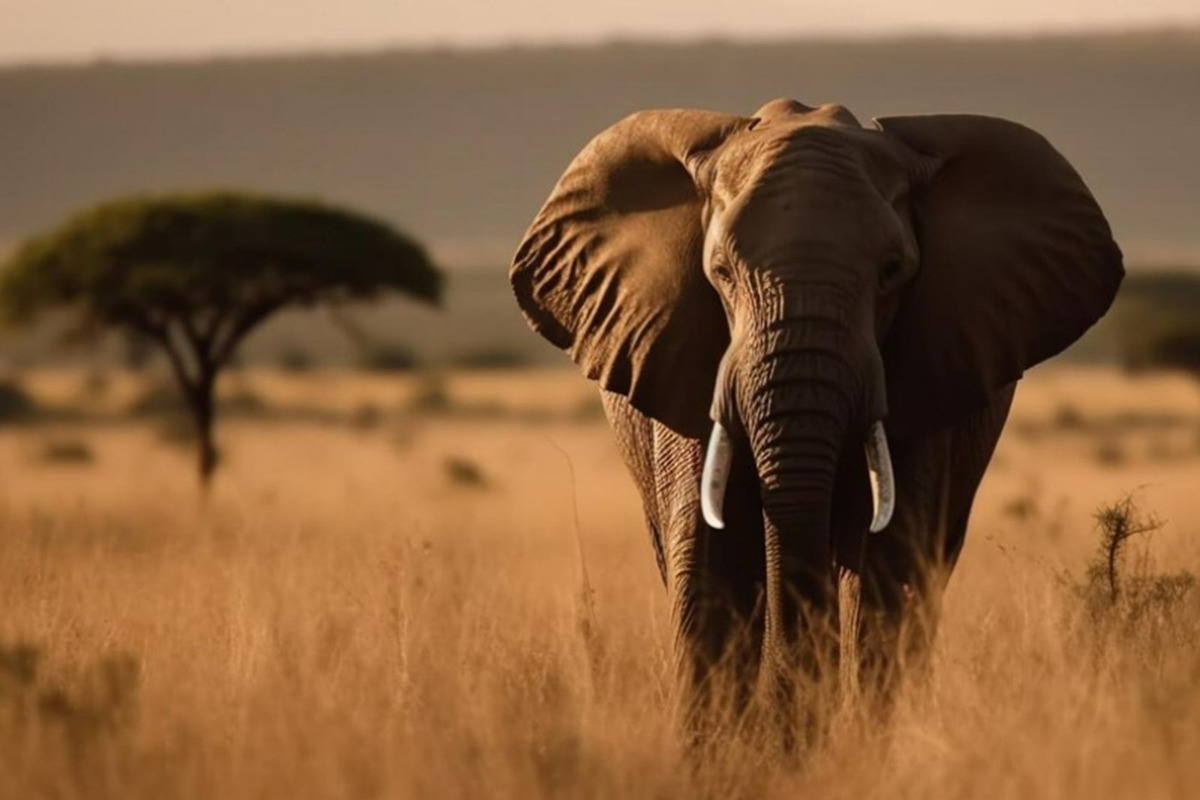The solution to the mysterious sudden mass deaths of African elephants has been revealed
[ad_1]

Thirty-five African elephants in northwestern Zimbabwe died under mysterious circumstances between late August and November 2020. Eleven animals from a huge herd died within 24 hours, reports CNN.
“They died in a very narrow period of time. This is one of the most mysterious pieces of the entire puzzle. That many animals die quite close to each other, but not quite close to each other in such a short period of time. This is a truly unique case in my opinion, particularly in this part of the world,” said Dr Chris Foggin, a veterinarian at the Victoria Falls Wildlife Trust in Zimbabwe who co-authored the study into the causes of the animal deaths.
Earlier that year, about 350 elephants in neighboring northern Botswana also died suddenly within three months.
Officials and experts were initially at a loss to explain the mass die-off that occurred among Africa’s largest elephant population. Poaching, poisoning and drought were blamed.
A bacterial infection killed the elephants, according to a study based on samples taken from 15 animals that died in Zimbabwe.
The analysis, published in the journal Nature Communications, showed evidence of infection by a little-known bacterium called Bisgaard taxon 45, which caused sepsis, or blood poisoning.
The death of the giants occurred because food and water supplies dwindled during the dry season, forcing elephants to travel ever greater distances in search of water and food.
The authors said heat, drought and population density in the area were likely contributing factors to the outbreak.
And the extreme conditions that scientists predict will occur more frequently as the Earth warms could lead to more elephant deaths in the future.
“It’s too early to say climate change has had an impact, but it could happen in the future if we have more frequent and longer droughts, or rainfall patterns change and we have a much harsher dry season,” Dr Foggin said. “I do think that if that is the case, we are likely to see similar deaths again.”
The study noted that elephant deaths in Botswana were attributed to cyanobacterial neurotoxins, but no further details were published. Foggin said there was no proven link between the elephant deaths in Zimbabwe and Botswana.
The African elephant is a flagship species that faces significant pressure due to poaching and habitat loss, CNN highlights. The population, listed as critically endangered on the International Union for Conservation of Nature’s Red List, fell by 144,000 to about 350,000 between 2007 and 2014, with ongoing losses estimated at 8% annually, according to the study.
Some 227,900 elephants live in the Kavango-Zambezi Transfrontier Conservation Area – 500,000 square kilometers (193,051 square miles) of protected land that makes up about 90% of the territory of Botswana and Zimbabwe.
The study authors wrote that signs of infection were found in six of the 15 samples, which was confirmed by isolating the bacterium in the laboratory and in-depth genetic analysis. There was no evidence of toxins, including cyanobacteria, or any viral infection.
Additionally, the study noted that no dead scavengers or other wildlife species were reported or observed in the vicinity of the dead elephants, as would be expected with cyanide or other deliberate poisoning.
“Although there was no cultural or molecular evidence to support the presence of Bisgaard’s taxon 45 in more than six deaths in Zimbabwe, the elephants examined were in good condition and unlikely to have died from drought-related starvation or severe dehydration alone,” the paper notes. research.
None of the elephants had their tusks removed as a result of poaching, and there were no external signs of injury. Tests for anthrax were also negative, Foggin added.
The researchers said they were unable to detect bacteria in other samples, a fact they attributed to poor sample quality and delays in obtaining the necessary permits, which meant it was too late to carry out some laboratory work.
“Most of the carcasses were in a decomposed state at the time of sampling, which degraded the quality of the original sample. Additionally, exporting wildlife samples for analysis requires obtaining multiple permits from different organizations, a process that can take months,” the study says.
Bisgaard’s taxon 45 has previously been associated with tiger and lion bite wounds in humans. The bacteria have also been found in chipmunks and healthy captive parrots.
The organism, which has no official name, is closely related to another, more common bacterium known as Pasteurella multocida, which can cause hemorrhagic septicemia in other animals, including Asian elephants.
The study notes that the bacterium was also linked to the mass mortality of 200,000 critically endangered saigas in Kazakhstan in 2015.
Foggin said researchers have been monitoring wildlife in the area for the presence of the bacteria, but no new elephant deaths have been confirmed as a result of Bisgaard’s 45 taxon since 2020.
[ad_2]
Source link








